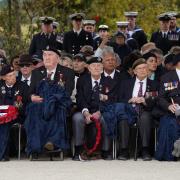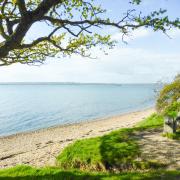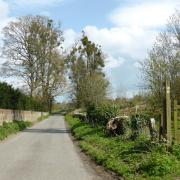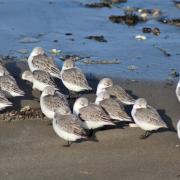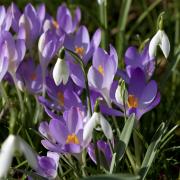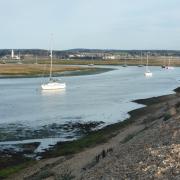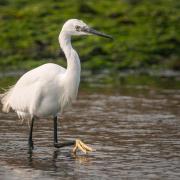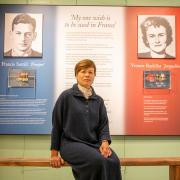Lyndhurst artist Claire Wiltsher on how she captures land and seascapes around the New Forest

I've come to the conclusion that descriptive capability is more developed in an artist than a writer whose professional tools are confined to words.
I don't know why it's taken me so long to figure this out. I can clarify the timing. Earlier today I interviewed Claire Wiltsher. Afterwards, at my laptop, I decide to begin by interpreting her landscapes. And that's where I falter. Each description that comes to mind proffers such banal inadequacy as to prompt repeated deletion. Which is when I recognise an artist's infinite accessibility to express emotional and physical intensity. At least, this artist.
"I'm a studio painter." The announcement surprises me. I'd envisioned Claire en plein air absorbing every nuance of the landscape. "But I tap back into that original feeling because I have a good visual memory. I can remember if there was a crow nearby that fascinated me. And smells, I recall smells." Such an intuitive response to nature is at the heart of this Lyndhurst artist's creations. A keen walker from an early age, an appreciation of the relaxation which the outdoors procures not only feeds her daily three-mile strolls with her working cocker spaniel, Oscar, but those atmospheric vibes which first stimulate a subject.
"I see something, the way light is created in nature, and it's just like I get a gut feeling in my stomach. That's when I stop, make some notes, maybe do a few quick sketches. And I take lots of photographs which are a great recording tool."
In her garden studio, the 57 year-old relies on good quality canvases and Winsor & Newton paints although she is happy mixing her own tones from five or six colours. She doesn't however, limit herself to one medium. "Recently I've been working with acrylic first. Acrylic is so fluid and easy to move around as a base. I work with rags to start with in order to cover a bigger area, then leave it to dry and add oils over the surface. Sometimes bits of collage are ripped and added into the acrylic then worked over the top with oils."
Magazines, if not small torn segments on the canvas, are influential in Claire's work, even on the periphery. "I have bits of magazines laid out, not always using them but sometimes I want that colour there. I always used to focus on visual language, it's a kind of process of personal expression and I'm more enthused now than ever."
As well as landscapes, Claire produces seascapes, two of which were successful in last year's Royal Society of Marine Artists Annual Exhibition. Her work is shown at Beaulieu Fine Arts, Winchester's Bell Fine Art and Ytene Gallery in Brockenhurst. She's aware of the positive influence of living in a county which produces an abundance of professional creatives.
One thing that enhances her productivity is music. BBC Radio 6 Music ("A station that pushes boundaries") is a constant while in her studio. Having inherited her father's musical interest, there's a recognition that listening to an eclectic range while working helps prevent any barrier of self-consciousness. Perhaps this explains the freedom and energy which radiates through her images whose skies boast Turneresque qualities. "He's the king," Claire responds. "His light is magical. I also like Constable's later, earthy work."
One aspect of painting, identifying when to walk away, is often a challenge for artists. "When it's getting near to the end, I take photos. Then I step back and look at the photograph objectively. In that instance, that first second, I know what's wrong." I applaud such a methodical, objective and honest approach. But then Claire is able to compartmentalise, duty bound to tend to the business side of being a professional artist which, although less interesting, is still necessary. "To do things you love, you have to spend time doing stuff you don't like; that's life."
A cool headedness filters throughout our discussion: never knowing enough, learning on a daily basis, being comfortable with square canvases rather than restricted to more predictable orientations. And titles? "Just what interests me at that moment. One of the key things about painting is that I want the idea of the imagination - on the part of the viewer - to be used. Total recognition inhibits the imagination."
I began by saying how inadequate words could sometimes be. Claire has proved me wrong.






